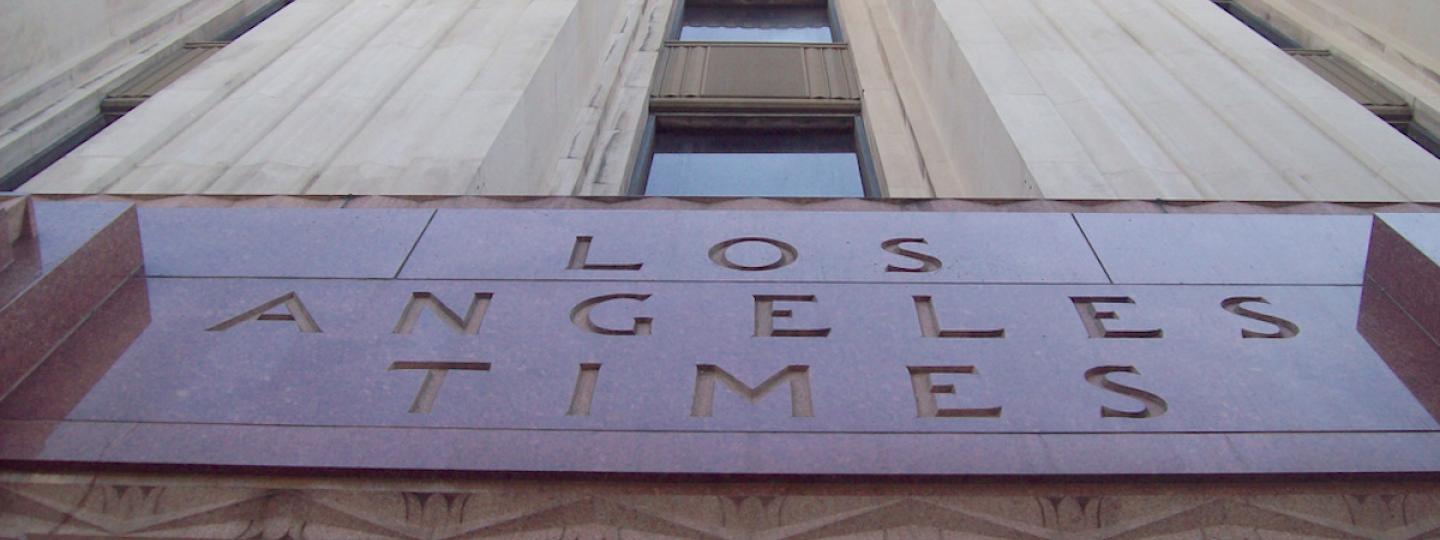Here's a hard-to-believe deal:
The Los Angeles Times (and Tronc Inc's nine other papers) are offering some digital subscriptions for the super-bargain rate of two cents a week, or $1.04 a year.
Don't rush to the phones, though, as I did, to try to place your order. The offer is available only under a special circumstance — when an existing digital subscriber phones or e-mails to cancel a subscription.
Still it's not all that rare and illustrates an inside-baseball twist to the current industry-wide pursuit of paid digital numbers.
Mark Campbell, senior vice president of digital marketing who oversees the effort from Tronc's L.A. offices, told me in a phone interview that the deeper-than-deep discounts account for under 5 percent of Tronc's total paid digital base. That would be around 13,000 of the 265,000 subs reported at the end of the third quarter of 2017. Both numbers will be higher when Tronc reports updated end-of-the-year results in early February.
Campbell points out that the cancelling subscriber has long presented a problem and an opportunity. Anyone who has once subscribed is a much better prospect than an e-mail mailing list would generate. Conversely, once the subscription relationship is severed, it quickly becomes harder to win the customer back.
"We' re always testing a range of offers — terms, duration and prices," Campbell said. This particular initiative goes by the in-house name, "Save the Stop"
Tronc could not provide exact data on what percentage of those offered the deal accept it, but volunteered that a third of cancelling customers over the past year (receiving various offers) were retained, compared to 10 percent the previous year.
The 2-cent deal began roughly a year ago so only a few under the plan have been asked so far to renew at a higher rate. (You can't get the $1.04 for a second year.) But among that small sample, roughly half are continuing.
There is some revenue sacrifice, of course, but Campbell said that with reduced introductory rates to new subscribers also pulling down the average, digital subscription revenues are up 70 percent year to year as the number of subscribers has risen 95 percent.
Campbell said that Tronc has one other good reason to stick with the deep discount for the near future. The company bought the Washington Post-licensed Arc content management system last year and is just beginning to phase it in paper by paper. The L.A. Times, first in that group, began operating on a beta version of Arc this week.
"Content loads faster, it's easier to navigate, and if you want to dig deeper you can," Campbell said. "It allows our journalists to tell stories in a more immersive way." That creates an extra incentive, he said, to get as many of the cancelling customers as possible to stick around and see the new, improved version of a site's digital report.
Campbell, with earlier stops at the New York Times and Wall Street Journal before he joined Tronc two years ago, said that the special attention to retaining customers is common in the industry and that some others offer rates as low or nearly so.
I got a somewhat more skeptical reaction on the super discounts when I called Matt Lindsay, president of Mather Economics. He is a leading consultant on paywalls, subscription pricing and the arcane art of identifying prospects, giving them enough of a free sample and beginning with attractive introductory terms that ramp up to full price.
"Tronc is client of ours," Lindsay told me, and expressed surprise at an offer so low. "We didn't advise them on that" — his work with Tronc has been on the print side — so he, like me, was unaware of the deal.
I am hearing conflicting opinions these days on how big a role paid digital subscriptions can play as sites search for added revenue to make up for lost advertising dollars. Some see a full pivot to asking readers to pay the majority of costs, while others voice doubts about whether that works for local sites, whether legacy or digital start-up.
The pool of potential subscribers is way smaller than for the big operations like the New York Times and Washington Post — now seeing much of their explosive paid digital growth in a worldwide market of English-speaking readers.
Then there is the value proposition: How willing will many readers be to spring for a local news report if the volume and quality of stories has been drastically crunched due to financial pressure?
"We have found that the more you penetrate the market, the higher the churn rate (cancelled subscriptions that need to be replaced to keep numbers and revenue equal)," Lindsay said. "You are getting past the most highly engaged, die-hard customers …"
"So the current thinking is don't stop at the sale — keep them reading, gather data on which content they read and what advertising they access." That's the path to building deeper engagement and reliably getting paid subs to renew over time.
My tipster on the L.A. Times deep-discount deal fit Campbell's Save-the-Stop model pretty exactly. He is Kevin Helliker, a longtime Wall Street Journal reporter and editor and Pulitzer winner who took the buyout a year ago and now edits a client magazine for the Brunswick consulting group.
Though he lives in the New York City area, Helliker wrote me:
"I subscribed after reading the LAT investigation last summer of the USC eye surgeon who allegedly was doing drugs with young people. Felt obliged to support that kind of journalism. But failed to develop the habit of reading it regularly and decided early this year to cut that expense. Accepted the new offer not only because it’s so low but because I do believe in the paper."
Not to be subversive, but might I suggest to digital-only paid subscribers to any legacy site: Try cancelling. You may be pleasantly surprised, as Helliker was, by the response.







